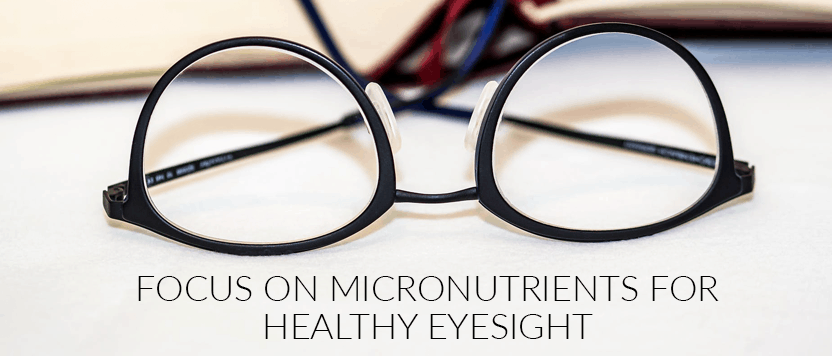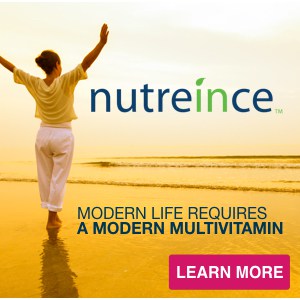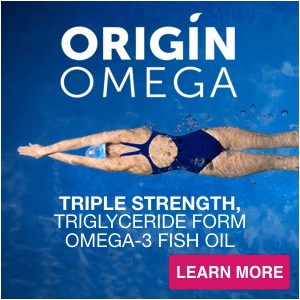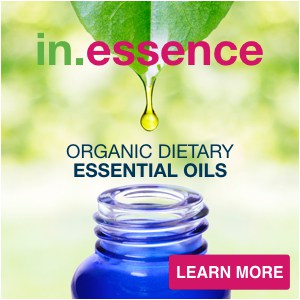When you wake in the morning, open your eyes, and see the beautiful new day are you grateful? How would you feel if when you opened your eyes you couldn’t see the world around you? For many Americans, seeing clearly isn’t a given. Age-related macular degeneration (AMD) is increasing in prevalence and is the leading cause of blindness in adults over 50.[1] Glaucoma is the second.[2] By the time these diseases set in, those suffering have missed the important years of preventative nutrition that may have helped. We do not want that to happen to you—we are here to help you see clearly how to improve your vision for the long term.
Our focus today is on AMD, glaucoma, and cataract risk, as these are the leading causes of poor vision and blindness, but there are many eye-related diseases that can benefit from a scientifically solid micronutrient therapy program. AMD affects over 2 million people over the age of 50[3] and refers to the degeneration of the macula, a yellowish area near the center of your retina that you need to see objects clearly. Glaucoma results from damage to the optic nerve as a result of fluid and pressure buildup in the front of the eye. Cataracts develop when the lens of the eye gets cloudy in spots, blurring and occluding vision. Antioxidants (which are micronutrients) have been shown to help reduce the risk of all three – and that just scratches the surface of the power of micronutrients and their ability to protect your eyesight!
As we laser in on micronutrients for healthy eyesight, keep in mind our rallying cry: be aware of micronutrient competition!
Here is food for thought: a pioneering 1998 study from the American Journal of Clinical Nutrition discovered that while both lutein and beta-carotene positively affected eye health, lutein hindered the absorption of beta-carotene when they were supplemented together. Four years later, the TOZAL study on AMD further investigated the effects of a supplementation protocol that kept lutein and beta-carotene separate. Their results were very exciting—by separating the lutein and beta-carotene, thus eliminating the micronutrient competition between them, researchers were able to prevent and even reverse the progression of AMD, stabilizing or improving vision in 76.7 percent of patients![4] This discovery- that separating competing micronutrients can unlock the power of each micronutrient so it can do its job – is essential for both the medical and nutritional communities to understand. If you are interested in reading more about micronutrient competition, check out our post here. With as many as 48 micronutrient competitions in a typical multivitamin, it seems to us that there are numerous potential health benefits that most people taking multivitamins cannot realize!
Watch this three-part video series to learn more about utilizing our anti-competition theory of micronutrient supplementation – the ABCs of Supplementation!
Micronutrient sufficiency can support your long term visual health. While they play different roles in vision, many well researched nutrients- like lutein or beta-carotene- are antioxidants- important free-radical scavengers that help reduce damage before it occurs. We have discussed the role of antioxidants you might know (like vitamin A or vitamin E) and others you might know less (such as omega-3’s or zinc) before- click the links to learn more! For right now, let’s laser in on some critical nutrients you won’t want to miss out on to see clearly for the long term.
Carrots Won't Cut It
- Vitamin A and Beta Carotene. Vitamin A is also called retinal, which is very similar to the word retina (the membrane on the back of your eye that processes light and sends that information to the rest of the brain). You have likely heard since childhood that if you don’t eat your carrots, your eyesight will suffer. Yes, vitamin A is absolutely required for healthy vision. In fact, vitamin A deficiency is the leading cause of night blindness in the world. If left untreated, vitamin A deficiency can progress from night blindness and dry-eye to total blindness.While carrots are a fantastic source of beta-carotene, beta-carotene is NOT vitamin A! Shocking, right? Beta-carotene is a carotenoid, which was discovered in 1932. It is known as pro-vitamin A which is an inactive precursor to vitamin A. This means that any beta-carotene we get from food or supplements must be converted into vitamin A in our bodies. The problem is, not all people can convert beta-carotene to vitamin A efficiently. According to research done at Johns Hopkins the average conversion rate in our modern population is likely 21:1, much different than the 6:1 rate most government agencies like the USDA still use. If the scientists at Johns Hopkins are right and it takes 21 units of beta-carotene to make 1 unit of vitamin A, then a carrot, which contains approximately 8000 IU’s (International Units) of beta-carotene won’t cut it to get your vitamin A needs met. That would only convert to about 380 IU’s of vitamin A out of the 3000 IU required each and every day. To cover your bases more adequately, allow some animal-based protein and fat into your diet or consider supplementing with preformed vitamin A, such as retinyl acetate. Liver, meats, chicken, eggs, and butter are some of the best sources of preformed vitamin A. For most, eating some animal foods will ensure that you at least get some vitamin A regardless of your ability to convert beta-carotene- and for those on a primarily plant-based diet, we also recommend supplementing with a safe daily dose of preformed vitamin A .[5] Don’t forget to choose organic when possible to reduce your exposure to harmful chemicals in your plant and animal foods and get more vitamin A in every bite from your grass-fed meat and dairy, and pastured eggs.
- Vitamin E. A critical antioxidant that protects all of your cell membranes from oxidative damage, vitamin E has been shown to reduce progression of AMD to more advanced stages. To boost your intake, choose foods rich in vitamin E such as avocado, papaya, spinach, sweet potato, dark leafy greens (especially mustard greens/swiss chard/kale), and olive oil. Almonds, hazelnuts, peanuts, and sunflower seeds are also excellent sources, but watch out, nuts and seeds are high in antinutrients and omega-6 – which can cause inflammation deplete other essential micronutrients. Because of this we recommend reducing or eliminating nuts and seeds from your diet. (Click HERE to read more) Vitamin E can is also found in salmon and pasture-raised eggs contain 3 times more vitamin E than conventionally raised hen eggs.
- Vitamin C. Like vitamins A, E, omega-3s, and zinc, vitamin C is a powerful antioxidant. Vitamin C helps you make collagen, connective tissue that builds the cornea (outer layer) and sclera (hard white outer layer of the eyeball) and may help reduce your risk of cataracts.[6],[7] Supplemental vitamin c has been shown to reduce cataract risk by almost half.[8] Fresh fruits and vegetables, especially citrus fruits, tropical fruits (like papaya or kiwi), bell peppers and chiles, and fermented vegetables (such as sauerkraut) are rich in vitamin C, but supplementing may be necessary for many of us. Vitamin C is greatly reduced after a food is picked- due to travel time and exposure to heat, air and light. Even with the best intentions, many of us will need to supplement vitamin C for eyesight (and more!) in order to maintain adequate levels.
- Lutein. Laser in on lutein, because this often overlooked nutrient has promising preventative and therapeutic power! This carotenoid (like beta-carotene, however lutein cannot convert to vitamin A) is often studied with the carotenoid zeaxanthin. Most recently, lutein has been shown to help reduce the negative effects of constant blue light exposure (from TV and phone and computer screens) by filtering it as it enters the eye.[9] As if that wasn’t neat enough, lutein also goes beyond its inherent antioxidant activity to quell production of pro-inflammatory cytokines (such as NFKB, iNOS, and COX2). Lutein may play a role in helping to treat AMD, which comes with a side of low-grade inflammation. Several studies suggest lutein can prevent cataracts and slow the progression of AMD,[10],[11] similar to the antioxidant vitamins noted above. Food sources of the carotenoids lutein, zeaxanthin, and beta-carotene are dark green and orange vegetables. Based on current research indicating that 6 mg of lutein is sufficient to reduce risk of AMD, we have added precisely that amount to our multivitamin – nutreince – significantly more than most multivitamin manufacturers add – if they add it at all!
- Zinc is a powerful antioxidant, digestive support mineral, immune booster, sex hormone supporter, and more, participating in hundreds of metabolic reactions. Zinc and vitamin A interact in several ways, some of which contribute to eye health. For instance, zinc helps make retinol-binding protein that transports vitamin A through your blood. Zinc also helps convert retinol to its active form, retinal. Because zinc deficiency limits vitamin A activity, zinc deficiency has been correlated with night blindness in some. Great food sources of zinc include oysters, meat, poultry, crab, lobster, beans, dairy products and nuts, seeds (see warning above). Zinc is challenging to absorb. Chew your food well to boost stomach acid and encourage zinc absorption and consider supplementation to cover your bases.
- Omega-3s. Among other roles, this type of fatty acid is an antioxidant, inflammation-reducer, cell-membrane supporter, immune booster, and blood pressure supporter. All of these roles are critical for eye health. The membrane that makes up your retina contains a lot of DHA, a type of omega-3 fatty acid. (Read more about the different forms of omega-3 fatty acids here and how DHA affects the brain and cell membranes here.) Furthermore, omega-3s help reduce inflammation by balancing pro-inflammatory omega-6 fatty acids, which may protect against body diabetic retinopathy, AMD, and glaucoma. If your eyes are dry, omega-3s support tear production; tears protect your eye from dryness and preserve vision. Good sources of omega-3 fatty acids include fatty fish, such as salmon, mackerel, herring, sardines, anchovies, caviar, bluefish, capelin, sablefish, and tuna. Alpha linolenic acid (ALA), an omega-3 fatty acid found in flax seeds, chia seeds, and walnuts, is touted by many vegans as a replacement for the omega-3 fatty acids found in seafood. However, plant source omega-3 does NOT contain EPA or DHA (like fish oil does). Like beta-carotene above, the ALA in plant based omega-3 must be converted by the body into EPA and then DHA. Here again, research shows that the average person only converts a small amount of ALA- about 3%- to DHA. If fish oil is not an option for you, DHA supplements sourced from algae are a great source of this one critical omega-3 (algae does not provide meaningful levels of EPA).. Supplementation is warranted for those who do not consume fish.
- Vitamin B1, B3, B2, B6, B9, and B12. Almost every B vitamin, when one digs deeper, supports eye health in a profound way. Unlike the nutrients listed above, the B vitamins are not all antioxidants. Instead, they are critical bringers of the buzz, metabolism supporters, cofactors (activators) of key enzymes, and bone and blood builders.
- Vitamin B1 (Thiamine) Preliminary evidence suggests that thiamine may be effective at reducing cataracts and diabetic retinopathy risk. Thiamin may also protect against cataracts when supplemented with vitamin A, niacin, and riboflavin. Animal foods rich in B1 include lamb, pork, turkey, chicken, eggs, salmon, tuna, organ meats, and brewer’s yeast. Plant foods rich in vitamin B1 include green peas, asparagus, whole wheat (found in wheat germ), romaine lettuce, spinach, mushrooms, and blackstrap molasses.
- Vitamin B2 (Riboflavin) Riboflavin possesses antioxidant activity which can reduce damage to the eyes, and riboflavin deficiency has been associated with cataracts. One study found a 33-50% reduction in risk of developing cataracts when previously deficient participants slightly exceeded the recommended intake for riboflavin, which were notably more profound in men than women.[12] Animal foods rich in B2 include liver, dairy products including milk and cheese, meats, eggs, tuna, and salmon. Plant foods rich in vitamin B2 include asparagus, dark green vegetables, avocados, almonds, mushrooms, and wheat germ.
- Vitamin B3 (Nicotinamide & Niacin) Most multivitamins only contain nicotinamide as their form of B3, but niacin continues to get more recognition as a longevity nutrient, and its role in eye health supports that reputation. Niacin helps support healthy blood flow to all tissues, including the eyes and brain. Higher niacin intake has been associated in a study of Korean adults with a lower risk of glaucoma, and an animal study showed niacin supplements can prevent glaucoma. More research is needed, but these studies are promising. Interestingly, research has also shown that more is not better with niacin. Nutreince, is formulated to contain both nicotinamide and niacin to support your highest good.
- Vitamins B6, B9, and B12. These micronutrients work synergistically to reduce homocysteine levels, reducing risk of heart disease (stroke) and AMD. Being sufficient in all three of these micronutrients reduced risk of developing AMD by 34% in a clinical study of over 5000 women.[13] Foods rich in B6 include liver, chicken breast, and yellowfin tuna, peanuts and other legumes (beans), potatoes, bananas, and wheat germ. Find vitamin B9 in liver, eggs, legumes (especially lentils and peanuts), sprouts, wheat germ (in whole wheat), asparagus, romaine lettuce, spinach, beets, and broccoli. Vegan and vegetarian diets have traditionally been associated with vitamin B12 deficiency due to a diet low or void in animal products. This is because neither plant or animal can produce B12, the exclusive source of this vitamin appears to be bacteria. The result of this is that B12 is not naturally found in plant based foods (some vegan foods are fortified with a vegan bacterial source of B12) and is only found naturally in animal products, such as meat, poultry, fish, shellfish, and to a lesser extent dairy products. These diets may also cause low stomach acid production, which may negatively affect B12 absorption. To ensure sufficiency vegans should obtain B12 from a supplemental source.
Supplemental Support
Are you missing essential micronutrients your body needs to keep you healthy? While a, balanced diet rich in diverse clean protein sources and organic, local produce should be sufficient to obtain these vital nutrients, the sad truth is that in our modern world even the best diets leave us deficient. For most of us, modern farming practices and processed food production have caused our soil and food to become massively depleted of meaningful vitamins and minerals, our lives are lacking in stress management and time for exercise and sleep, our medications are causing even greater depletions and many of us cannot afford to spend every hard-earned dollar on the healthiest whole foods. As you consider the benefits of supplementation for your general well being and eye health, we offer you the following food for thought.
- Seek Synergy. Many nutrients work well together, and providing the right amounts of the right nutrients in the right forms helps get the work done. For instance, zinc and vitamin A, both found in the right forms and amounts in nutreince, zinc helps shuttle vitamin A from the liver to its destination – such as the retina. Vitamins B6, B9, and B12 work together to reduce homocysteine levels. Vitamins C and E support each others antioxidant activity. In a multivitamin such as ours with research-driven dosing, you can get more for your money by being smart.
- Cut the Competition. Competition is the opposite of synergy: certain micronutrients can reduce each other’s absorption and/or activity. For instance, in the TOZAL study referenced above to treat AMD, the only reversal of AMD occurred when beta-carotene and lutein were separated and not taken at the same time. This was because these micronutrients compete for absorption. In nutreince, we separate beta-carotene and lutein into morning and evening doses in order to make sure you get the benefits each has to offer. Another eye-related example is zinc and copper, which also compete for absorption.
- Choose beneficial forms and amounts. Exceeding the recommended nutrient intake, for many micronutrients, is not wise due to potential competitions.
- In this spirit, notice the differences in the levels of B vitamins between nutreince and other multivitamins. We give you what you need- not megadoses that can compromise absorption and utilization of other micronutrients- and in forms you can use, such as pyridoxal-5-phosphate (B6), 5-MTHF (methylfolate) (B9), and methylcobalamin (B12).
- Most multivitamins do not include lutein at all. We use the (patented) marigold form of lutein due to its high efficacy in the research. While whole food supplements may get their lutein source from spinach or kale, there is no way to know exactly how much lutein will be in each bushel and therefore these whole food sources cannot be standardized. The marigold form of lutein is a natural source that allows supplement manufacturers to include specific quantities of this beneficial ingredient into their formulations without the inherent anti-nutrients that are present in whole food supplements. We have included 6 milligrams of lutein and 2400 micrograms of zeaxanthin in each daily dose of nutreince because that is the amount that is recommended to prevent/reverse AMD and protect against blue light.[14]
Beyond Micronutrients – Protect those Baby Blues!
- Respect daylight hours- choosing sun over screen. While we discussed the critical role of lutein in helping to prevent blue light from your TV, computer and phone screens, from damaging your eyes, you will still benefit your long-term eye health if you reduce strain. Choose adequate lighting when indoors, use sunglasses when outdoors if your eyes are very lightly pigmented, and reduce blue light exposure both throughout the day and especially in the evening. Choose blue light filters when you do use screens as often as you can, especially at night. The best defense is a good offense.
- Seek shade as appropriate. Your eye pigments are partially there to capture light energy and transduce it into images. Your eye pigments are also there to protect your eyes from the damaging effects of light, just as melanin in your skin will do. If you have blue or hazel eyes especially, consider using sunglasses or wearing a wide-brimmed hat to reduce direct sunlight exposure and give your eyes a break over time. This doesn’t mean avoid being outside- you need vitamin D! But be prepared.
Clear Conclusions
The more we learn about nutrition for eye health, the more we see common metabolic themes that affect other disease risk. Reducing inflammation and boosting antioxidant intake in an informed and healthful way is critical to support your body and mind for the long haul. So eat a rainbow and enjoy your carrots, but let us help to ensure you have sufficient access to the micronutrients you nee
[1] https://www.ncbi.nlm.nih.gov/pmc/articles/PMC5178091/
[2] https://www.ncbi.nlm.nih.gov/pubmed/26557702
[6] https://academic.oup.com/ajcn/article/69/6/1086/4714888
[7] https://www.ncbi.nlm.nih.gov/pubmed/1985409
[8] https://www.ncbi.nlm.nih.gov/pubmed/1392884
[9] https://www.ncbi.nlm.nih.gov/pubmed/10711880
[10] https://www.ncbi.nlm.nih.gov/pubmed/25515572/
[11] https://www.ncbi.nlm.nih.gov/pubmed/28425969
[12] https://www.ncbi.nlm.nih.gov/pubmed/7840110











